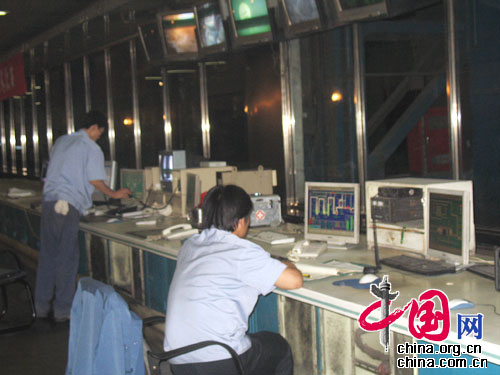| Home / China / Features | Tools: Save | Print | E-mail | Most Read |
| Steel Giant to Move Out of Beijing |
| Adjust font size: |
Chinese steel giant, Shougang Group, currently located in Beijing, will move all of its steel-related ventures out of the city by 2010, the company reports. Its Beijing headquarters will be transformed into an environmentally friendly site that focuses on new businesses. Though the employees feel sad about leaving Beijing, they are absolutely willing to relocate and are now making preparations to do just that. They say the plants are home to them but they are willing to dismantle them and move out of Beijing in order to provide the city with a nicer environment to host the upcoming 2008 Olympic Games.
The group had been unable to find any other sites near its current Beijing location suitable for its enlargement and further development. Furthermore, Shougang finds itself under increasingly high pressure, as the Beijing government sets higher standards of environmental protection. In recent years, it has taken various measures to effectively reduce pollution. Beijing, however, is demanding much cleaner air since it has become the host city of 2008 Olympic Games. Thus Shougang thinks moving out of Beijing in the best interests of the city. So it has decided to find a suitable place for its plants outside the city, finally settling on Caofeidian. Shougang worked out a relocation plan, which was approved by the State Council in 2005. The plan consists of three parts. First, within five years, the group will move all of its steel-related sectors to a new base in Caofeidian, located in Tangshan, Hebei Province. Second, it plans to set up a cold-rolled sheet production plant with a yearly production capacity of about 1.5 million tons in the Shunyi District of Beijing. This new plant, to be equipped with the latest technology, will produce high-value-added steel products that will be directly supplied to the adjacent Hyundai Motor Company, also based in Shunyi. Third, after relocating the steel production sectors, the group's Beijing headquarters will alter its focus to research & development, sales, high technology, electronics, service, real estate and other non-steel-related businesses. The group also wants to open a museum of metallurgy, as well as other leisure facilities in its Beijing headquarters, in order to attract tourists. As set out in the plan, the group's First Steel Plant has already been dismantled; the Second Steel Plant will cease operation by 2010; the Third will stop production next year. Relocating such a large group not only focuses on moving the steel plants themselves (no small feat, considering the significant annual production capacities, totaling 8 million tons), but is also about moving 80,000 employees and all of the employees' families as well. Because of this, the relocation project needs strong efforts from within, as well as cooperation from outside the group. As a result of technological updates and a tight relocation schedule, a large number of surplus employees will lose their current jobs at Shougang. Some of them will be offered retirement, others will find new jobs through the Beijing re-employment program, and the rest will be offered new positions in sectors of the group's other operations. To help with this, Shouguang is promoting an education campaign throughout the group to encourage its employees to innovate and offer them opportunities to learn new techniques. In this way, the group aims to ready its employees for new positions after the group has relocated. The group's relocation is a very important factor in its future development. It is now situated in the west of Beijing, at Shijingshan. Established in 1919, iron was then Shougang's only product, and the company suffered from riots and other strife before the founding of the People's Republic of China. With the founding of the PRC in 1949, Shougang experienced a rebirth. In 1958, it developed the ability to produce steel. In 1978, its annual production was 1.79 million tons of steel, establishing the group one of top ten steel makers in China. Its steel output reached as much as 8.24 million tons in 1994, making Shougang the biggest steel maker in China. Today, Shouguang has grown to be a large conglomerate group, not only focusing on steel production but also has interests in other businesses such as mining, machine production, building, real estate, service and foreign trade, to name a few. Although the group has had a large turnover during recent years, it has been under intense pressure from its competitors, both at home and abroad. In order to grow stronger, it has been forced to boost its strength by making some significant strategic structural adjustments.
(China.org.cn July 12, 2007) |
| Tools: Save | Print | E-mail | Most Read |
 |
| Related Stories |

